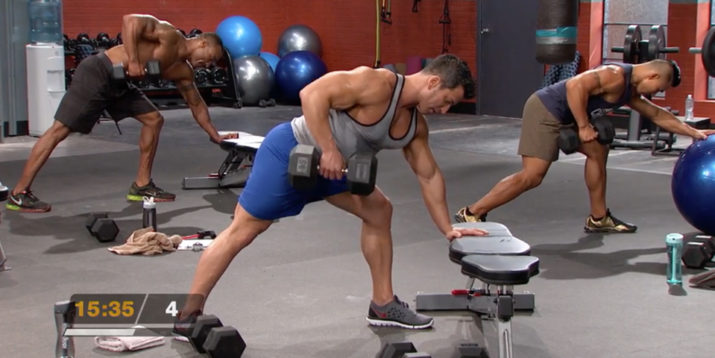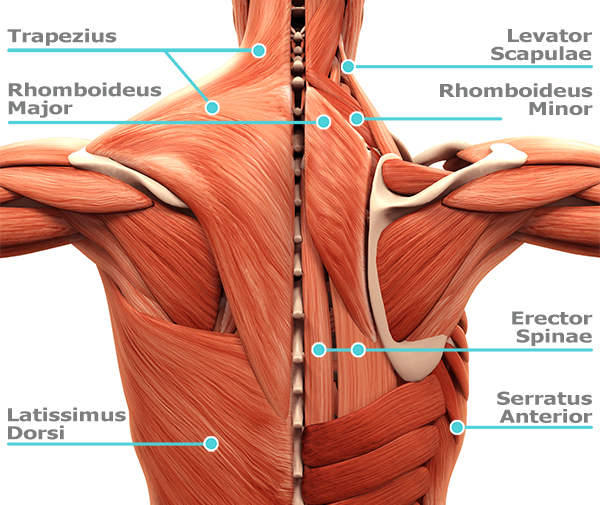How to Do a One-Arm Dumbbell Row for Maximum Muscle Growth

Every exerciser wants to get the most out of each workout. The best exercises are all about efficiency — no rep performed in vain. If that’s the case, then why would you want to spend time doing a one-arm dumbbell row? After all, you do the same amount of work in half the time by performing a two-armed row.
It’s because the one-arm row actually lets you move more weight than you could by doing a two-arm dumbbell row. When you do a dumbbell row with one arm, you can stabilize yourself with the other hand, unlike when you do a dumbbell row with two arms. Oftentimes, when stability is increased you can lift more total weight when you tap each side individually.
“The one-arm dumbbell row allows you to lift heavier, which recruits the bigger muscle fibers and gives you a greater potential for growth,” says Cody Braun, CPT and NASM performance enhancement specialist. “The free hand allows you to stabilize your bodyweight more efficiently and limit the amount of back extension. Plus, whenever you work the body unilaterally, you work core stability, which is a functional bonus.”
The ability to lift more weight and increase core strength? Count us in! Here’s how to do the one-arm dumbbell row with proper form, and tips on how to add it into your workout routine.
How to Do the One-Arm Dumbbell Row With Perfect Form
Appears in: LIIFT MORE >> Week 1 Day 3: Back & Triceps
- Holding a dumbbell in your right hand, place your other hand on a bench or stability ball in front of you. Step your right leg back keeping it straight, and bend your left leg slightly. Lean your chest forward, keeping your back flat.
- Drive your elbow up, bringing the dumbbell to your ribcage.
- Release your arm down and repeat.
- Do equal reps on both sides.
How to Make the One-Arm Dumbbell Row Easier
- Use a lighter weight.
- Reduce the amount of stress on your core: Do this by performing a chest-supported row, in which you lay with your chest on a inclined bench and your legs supported behind you. Let your arms hang down to the sides of the bench holding a dumbbell in each hand, and row one side at a time.
How to Make the One-Arm Dumbbell Row Harder
- Pick a heavier weight (without sacrificing form).
- Decrease stability: Instead of performing the one-arm dumbbell row with one hand on a bench, try keeping it to your side or folded behind your back. You can also step your feet next to each other to increase how hard your core musculature works.
Bonus Tips for Doing the One-Arm Dumbbell Row
“It’s easy to use momentum to jerk the weight up, but if you lower the weight and control the entire movement, you will get more out of this exercise,” Braun says. And always prioritize proper form. If you find that you’re using momentum to get the weight up, or your twisting your body to complete the move, go down in weight.
Benefits of the One-Arm Dumbbell Row
A strong back is crucial for good posture. We often sit in a slouched position over a keyboard which leads to shoulder and neck stiffness. Back exercises like the dumbbell row can help counteract that by increasing strength in those often weak muscles.
The one-arm dumbbell row is great for shoring up muscle imbalances. When you do this move, you’ll probably immediately notice that one side is stronger than the other. Individually loading each arm allows you to help close the gap.
Muscles Targeted by the One-Arm Dumbbell Row

The dumbbell row is a stellar exercise for working your back muscles, including your latissimus dorsi, trapezius, and rhomboids.
Latissimus Dorsi
Commonly called “the lats,” this is a fan-shaped pair of muscles that spans both sides of your mid and lower back that inserts on the upper arm bone. The lats are your primary “pulling” muscles and are responsible for extending your upper arm, bringing the arms toward your body, and turning the front of your arms toward your chest. When you build up your lats, they give your torso a “V” shape when viewed from behind.
Trapezius
Your trapezius muscles, often shortened to “traps,” is a kite-shaped muscle that runs vertically along your upper spine and fans out toward your shoulders. It helps stabilize and articulate your shoulder blades, which move nearly any time your arms move. As a result, there aren’t many upper-body movements that don’t involve your traps.
Rhomboids
The rhomboids are group of muscles that form a diamond-shape on your upper back. The rhomboids major and minor run from the inner edge of your scapula to your spine, and together, their primary role is to retract the scapula and help prevent excess movement in the shoulder blades while you throw and push objects.
All of these muscle groups are strengthened by the one-arm dumbbell row, helping you become even more efficient at tasks that involve rowing, pulling, and more.
